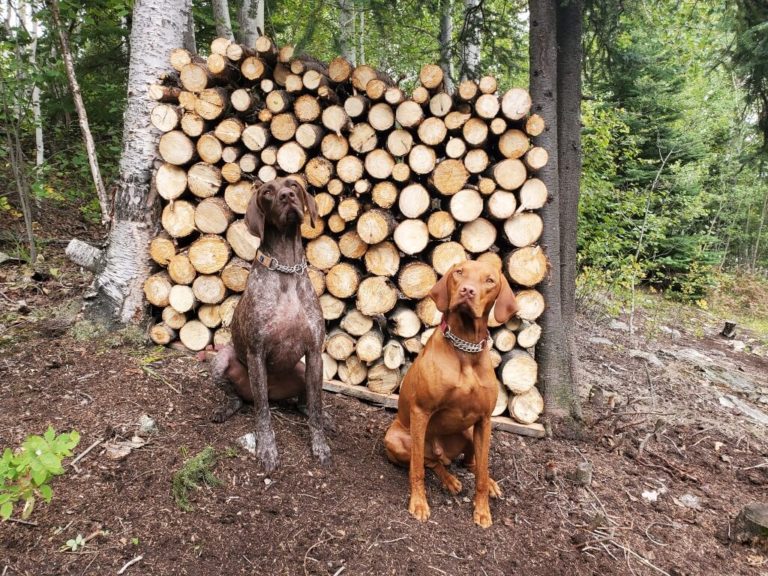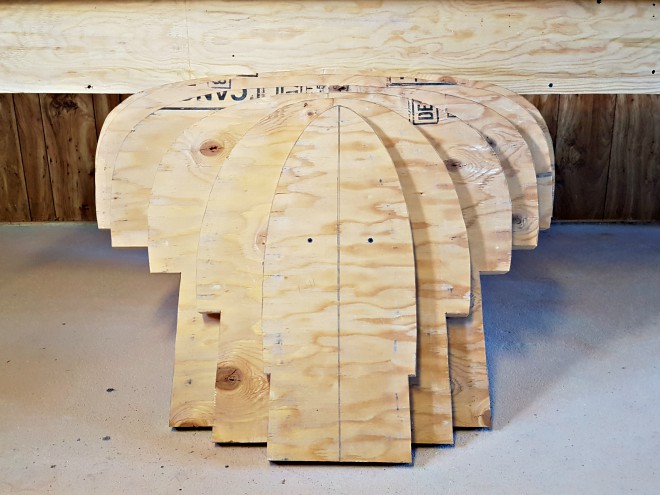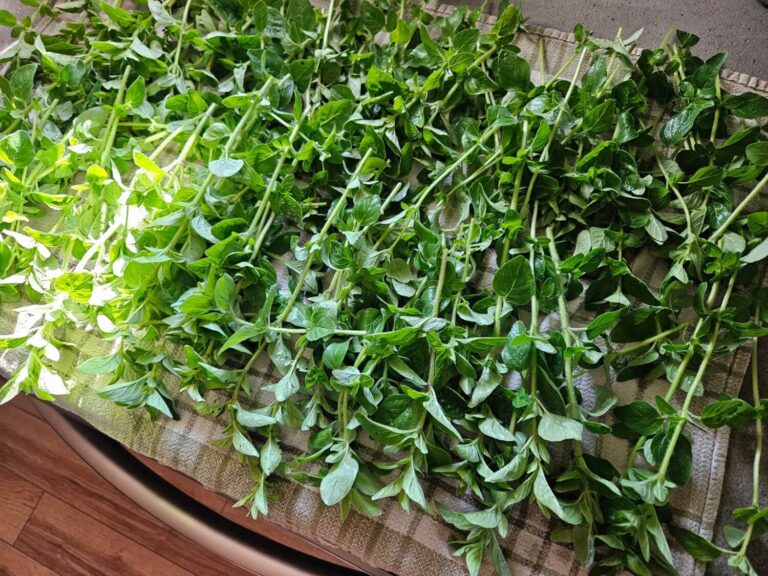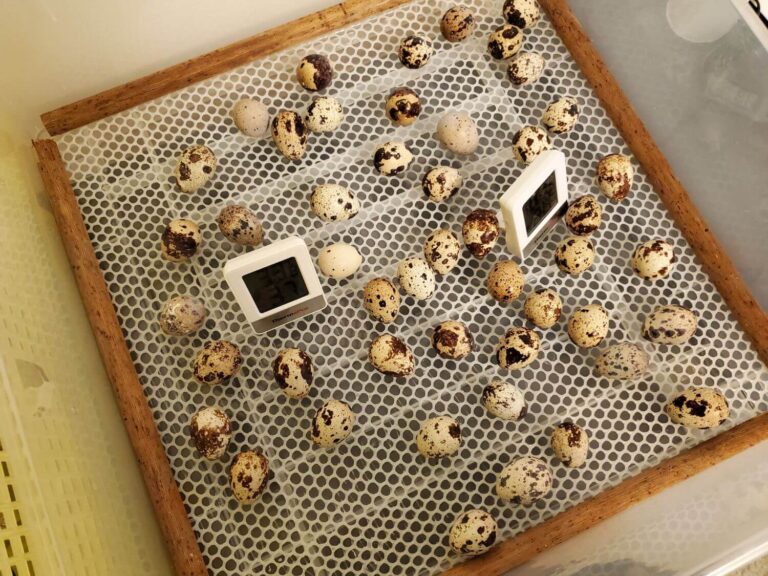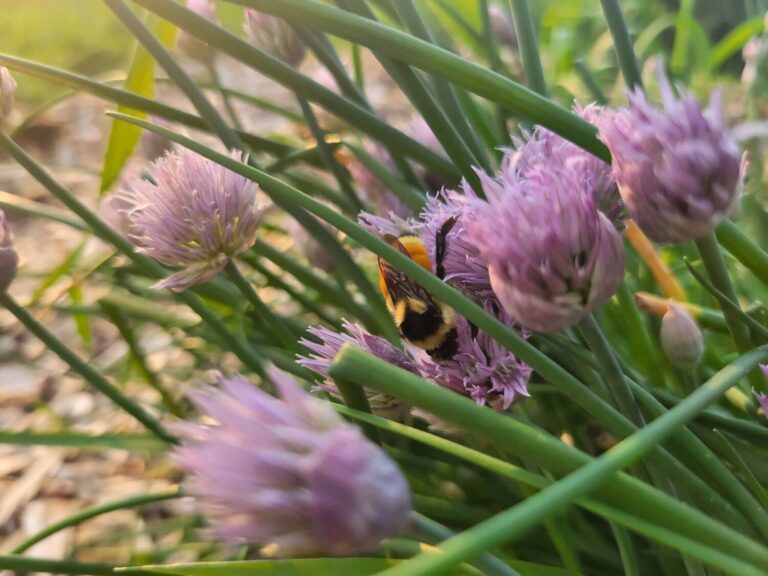CALMING THE SEED CHAOS: MY ALL-IN-ONE SEED STORAGE, ORGANIZATION, AND SCHEDULE SYSTEM FOR GARDENING
Looking back to my childhood, planting a garden seemed so simple. Most everyone I knew simply picked a day (usually on the long weekend in May), threw all their seeds into the ground, and called it good. While direct sowing everything all at once is straightforward and easy to plan, it does limit the gardener to some degree.
Once I started experimenting with starting my own seeds, growing multiple varieties, season extension, and succession sowing, it made things much more complex. I realized I was going to need a way to store and organize seeds and keep track of what tasks needed doing when. After a few years struggling through the chaos of random seed packs spread about and ineffective printouts, notebooks, spreadsheets, and apps, I crafted what I believe is the best system for consolidating a garden schedule, seed storage, and just general task organization all in one place.
This post may include affiliate links. As an Amazon Associate I earn from qualifying purchases. Find more info in my privacy policy.
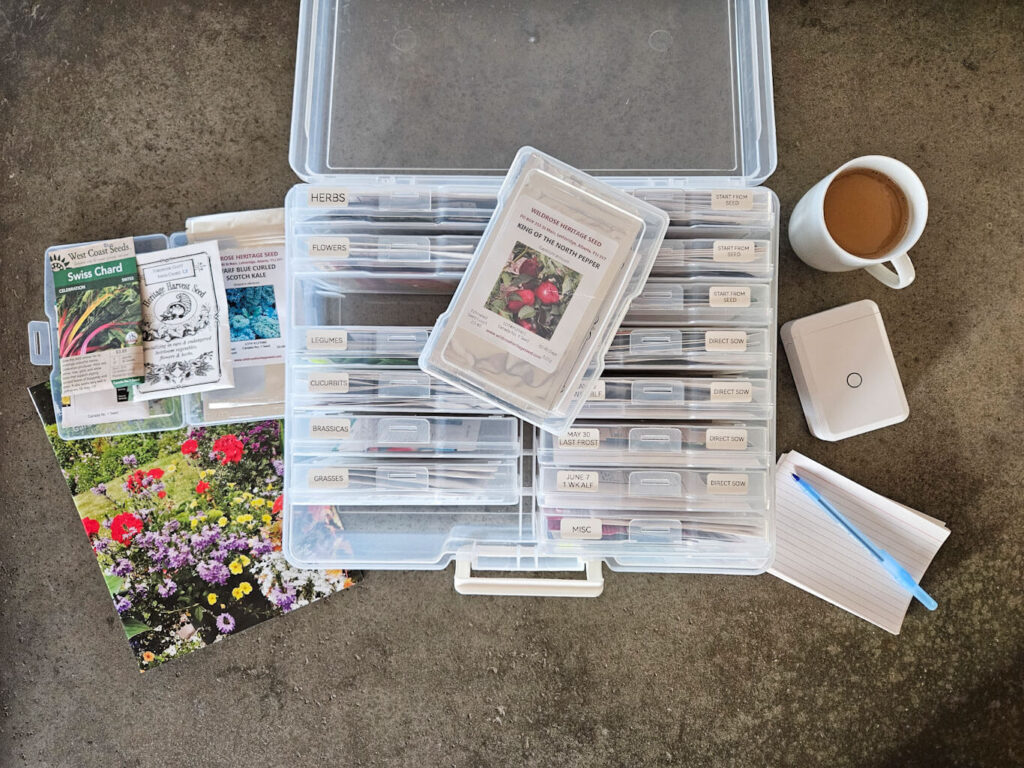
WHAT YOU’LL NEED
- Photo storage box
- Label maker (or masking tape and a marker)
- 4×6 Index cards
- Seeds
USING PHOTO CASES FOR GARDEN SEED STORAGE
You’ve likely already seen photo storage cases being used for seeds, as they have become all the rage among gardeners in the past few years. And for good reason. They are perfect for storing and organizing garden seeds. It’s a trend I’ve definitely adopted and will stand behind.
This is the photo box that I personally use: Novelinks Photo Case
It’s made up of an outer case which contains 16 smaller inner cases. The outer case snaps closed and has a handle, which makes transporting the entire collection super easy. The inner 4”x6” cases are the perfect size for most garden seed packets and also snap shut securely. It’s very convenient to grab a case or two at a time, go out to the garden or your seed starting area, and then return them to the outer case once you’re finished.
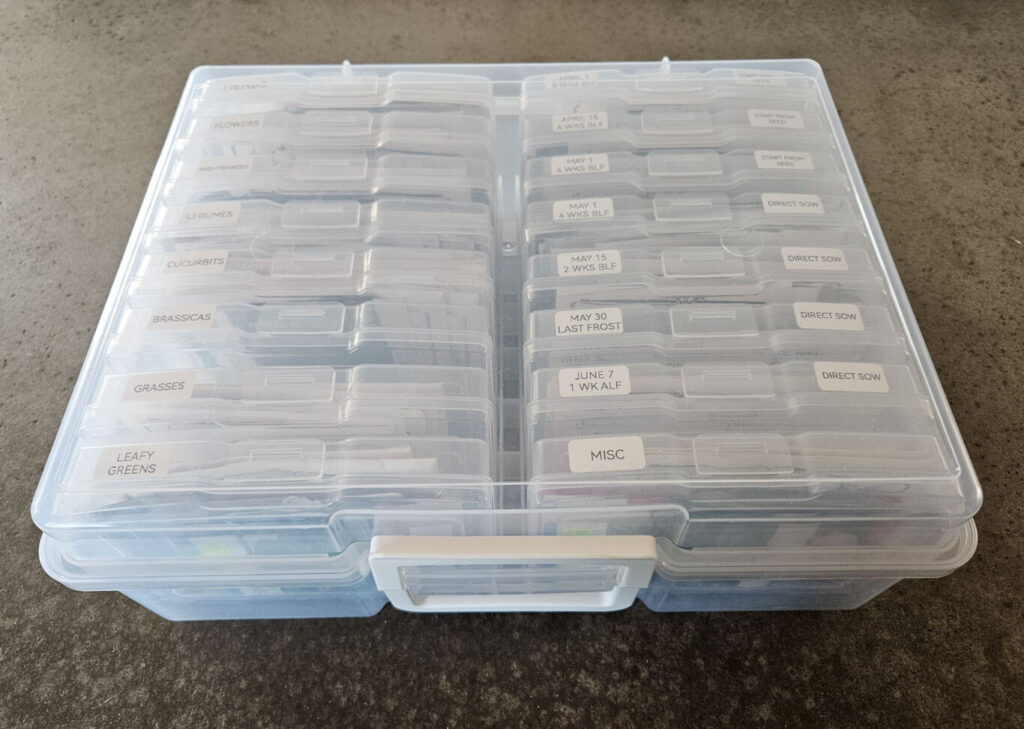
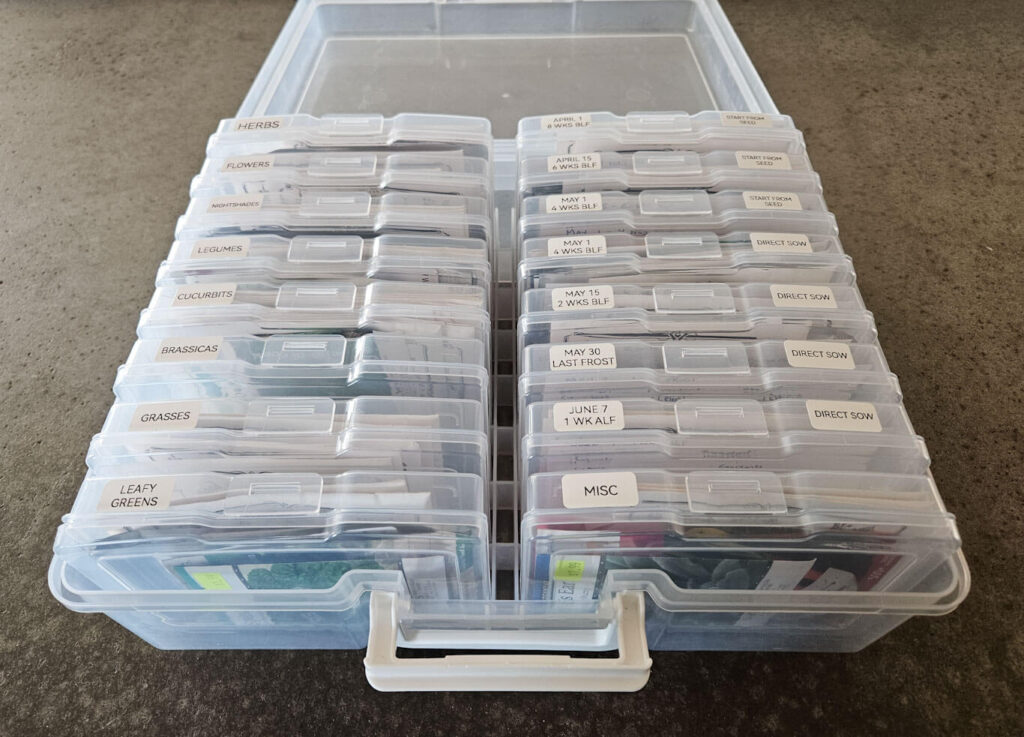

The case within case design also helps ensure the seeds stay dry, which is ultimately the most important part of storing garden seeds to ensure viability. The entire collection should also be stored somewhere cool and dark, if possible, as that will also help extend the shelf life of the seeds.
Of course, the biggest benefit to the photo box is the fact that each inner case can be labeled and designated for a certain type of seeds, making organizing and finding the seeds you’re looking for an absolute breeze.
I use this handy little label maker to mark my cases: Niimbot D11 Label Maker
You can label in whatever manner makes the most sense for your gardening style. Consider cataloging by:
- Family (ie brassicas, aliums, etc.)
- Species (ie peppers, tomatoes, beans, etc.)
- General type (ie leafy greens, herbs, etc.)
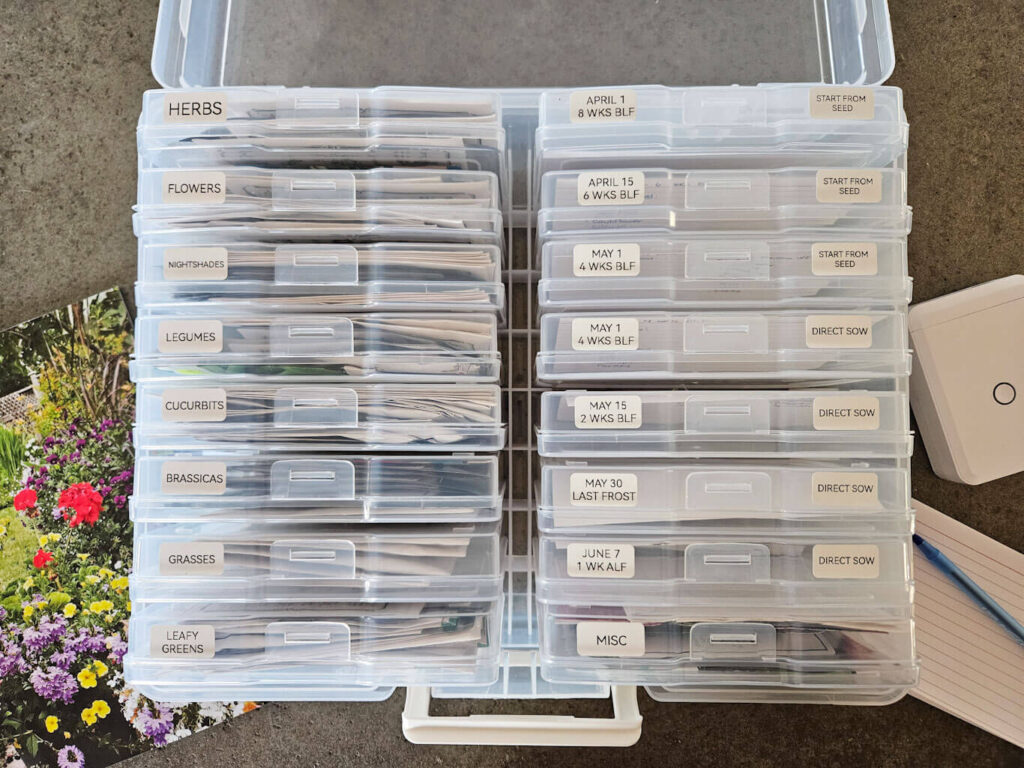
Any combination of labeling will work too. For example, if you typically plant a lot of varieties of tomatoes but only a handful of herbs, it may make sense to subdivide into cases for paste tomatoes, slicing tomatoes, and cherry tomatoes, while still keeping just one general herb case.
I typically find that I can fit 15-20+ seed packets in each inner case, depending on the size of the seed and type of packaging. If you have a large or complex seed collection, you may want to have two or more boxes.
HOW TO INCORPORATE A SEED STARTING SCHEDULE INTO A SEED STORAGE CASE
There are several tasks to track when it comes to seed starting and planting out a garden.
For seeds that you’re starting indoors, you’ll need to keep track of:
- when you want to start each seed variety
- when you need to start hardening off seedlings before transplanting outdoors
- and, when you need to transplant outdoors
You’ll also more than likely have seeds that will be direct sown into your garden beds. This is something else you’ll need to track and schedule, as different varieties will vary in terms of when they can be sown in relation to you last frost date.
Finally, you may also want to track succession sowings of plants that you plan to spread out over multiple weeks, rather than planting all at once.
For years, I tried to track all of this in so many different ways. I tried pre-filled print outs, templates, spreadsheets, apps, phone notes, digital calendars, paper calendars, and a good old fashioned notebook. No matter what I used, I found I constantly missed things as pre-made templates were not always suitable for my region, my notes were not always handy, or I would forget to update something.
I finally decided that it made the most sense to plan out the season and lay out my schedule while I was organizing my seed collection. Keeping everything in one place made it much easier to take inventory, make plans, and accomplish tasks without missing anything.
I came up with a system that uses the inner storage cases for scheduling and index cards to track tasks.
As most garden tasks are in relation to your last frost date, start by finding that first if you don’t already know it. Simply search for your location + last frost date to find what is average for your region.
You’ll then want to create a case for each week before last frost (BLF) for which you’ll be starting seeds indoors and/or direct sowing. I like to keep these separate to make it super easy to know that I’m putting the right seeds in the right places. Label each case with the date, the number of weeks BLF, and whether those are seeds you’ll start indoors or direct sow.
For example, my last frost date is roughly May 30. I like to keep things as simple as possible and spread my plantings out every 2 weeks going back to 8 weeks before last frost. I have cases for:
- April 1 (8 Weeks BLF) – Start From Seed
- April 15 (6 Weeks BLF) – Start From Seed
- May 1 (4 Weeks BLF) – Start From Seed
- May 1 (4 Weeks BLF) – Direct Sow
- May 15 (2 Weeks BLF) – Direct Sow
- May 30 (Last Frost) – Direct Sow
- June 7 (1 Week After Last Frost) – Direct Sow
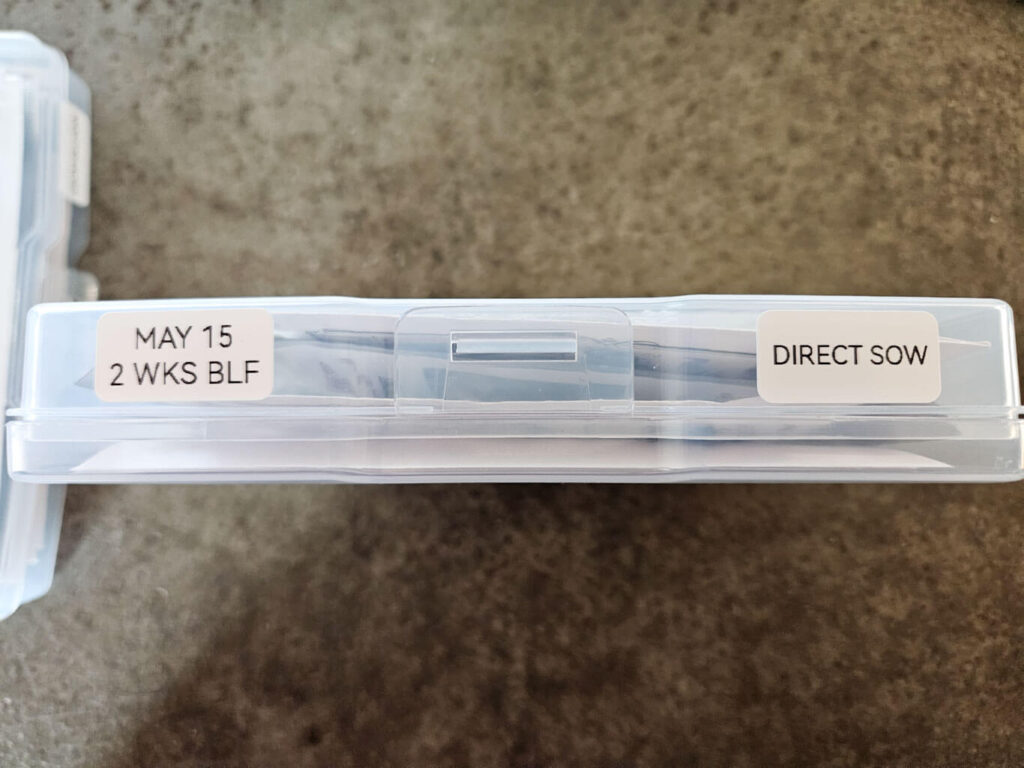
Of course, you’ll want to make a system that works with your gardening style. Maybe you go back as far as 12 weeks BLF when starting seeds indoors or maybe you like to sow seeds every week through the planting season. In that case, you might want to have an entire photo case dedicated just to the “schedule” cases to give yourself more room.
HOW TO INCORPORATE A GARDEN TASK SCHEDULE INTO A SEED STORAGE CASE
The cases you created above will help you organize and keep track of what seeds your starting indoors and direct sowing into the garden, but what about all the other garden tasks that go along with the planting season? You also need to keep track of when to pot up your seedlings, when to start to harden off your seedlings, when to transplant, and when to succession sow.
It was these tasks I was finding the hardest to keep track of as they were generally hidden away in some phone note or spreadsheet – out of sight, out of mind. I wanted something that put them directly in front of my face while I was in gardening mode.
And this is where the index cards come in.
Once you have your schedule cases figured out and labeled, you’ll want to create an index card for each box. On the index card you’ll note your action-based tasks associated with a list of plant varieties for that specific week.
You can list out things such as:
- Start from seed (indoors)
- Pot up seedlings
- Start to harden off
- Transplant (outdoors)
- Direct sow
- Succession sow
- Any other garden tasks you find you have a hard time tracking
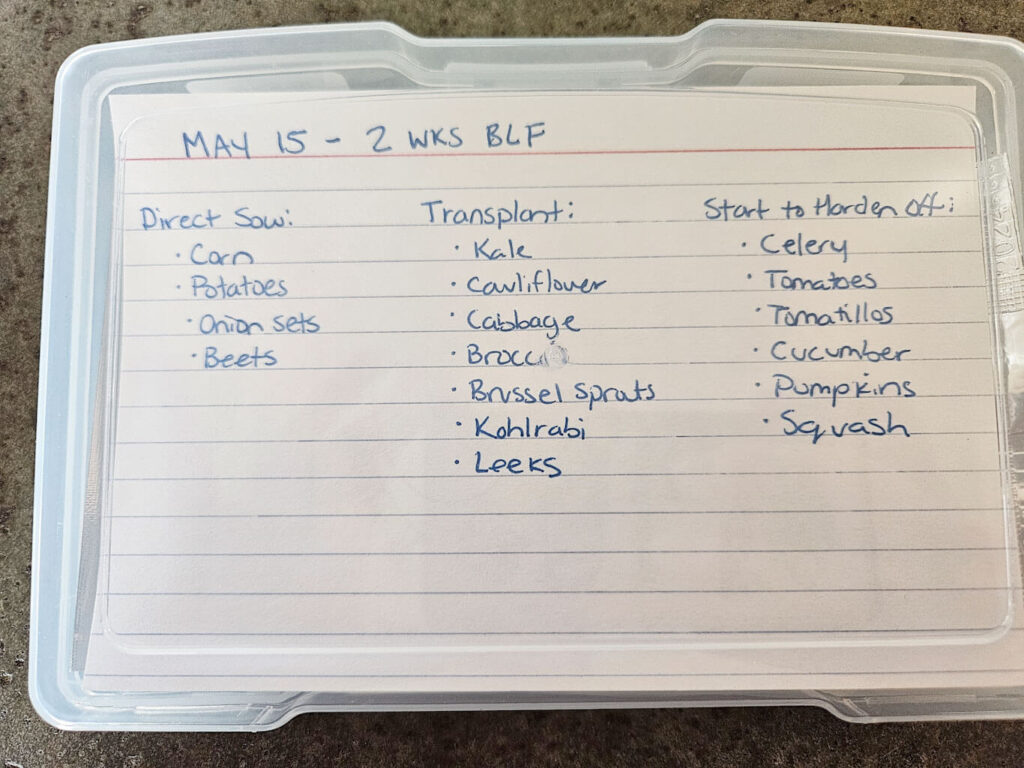
Having this all listed out (but also handy when actively gardening) makes it almost fool proof. Each week, simply reference the index card to see what plants have associated tasks to complete.
The index cards fit perfectly inside the photo cases and can easily be edited/replaced if needed.
Index cards can also be placed in the storage cases with lists of your favourite varieties to make sure you don’t miss anything when taking inventory and ordering replacements seeds.
They can also be used in the schedule cases to track what varieties you plant in a particular season and jot down notes through the season on how things do. Which effectively turns this system into a garden journal as well.
THE PROCESS
Once you have your photo cases all labeled and organized, putting this system into practice is pretty straightforward.

Prior to the season, during your garden planning stage, move any seeds you plan to use into the appropriate “schedule” case.
When it comes time to plant, simply grab the case you need, take it to your seed starting station or out to the garden and plant.
Each week, review the index card and complete any tasks, as indicated.
Following the planting season, take any remaining seed packs out of the schedule cases and return them to the storage cases. This is the time to do inventory – check what you have, what you need, look at expiration dates, etc. I like to do this in the late fall about the time that seed catalogs start to come out and I begin planning out the garden for next season.
A quick note on seed expiration dates – most garden seeds remain viable well past their printed expiration date. I typically will hold onto expired seeds and either do a germination test prior to planting or seed a little more thickly than usual.
Purchase or order your seeds and organize them into their storage cases as they arrive.
Then start the process all over again once you start prepping for the next season!
I’d love to hear about other methods for seed storage and garden task organization. If you have a system you use and love, please share in the comments!

